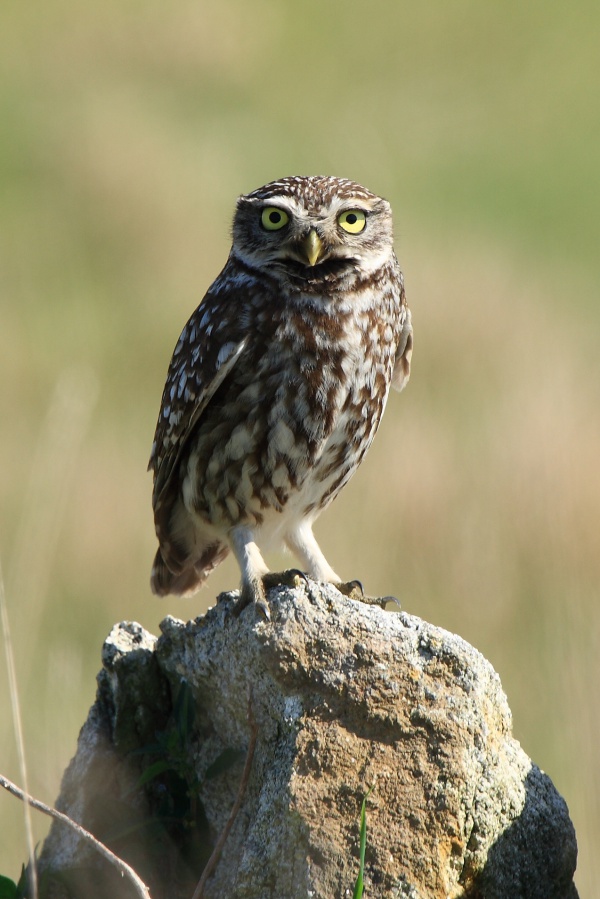Facts About Little owl
The little owl is a charming bird species that you can spot across Europe, Asia, and North Africa. Interestingly, they have also established populations in New Zealand and the United Kingdom due to human introduction. These small, nocturnal birds belong to the true owl family, Strigidae, and have a diverse diet that includes insects, earthworms, and small vertebrates.
Little owls are cavity nesters, meaning they prefer to lay their eggs in hollow spaces. The female takes on the role of incubating the eggs, while the male is responsible for bringing food to the nest. After about seven weeks, the young owls are ready to leave the nest.
This species is thriving in the wild and is classified as "Least Concern" by the International Union for Conservation of Nature, indicating that they are not at immediate risk of population decline.
The little owl is easily recognizable by its flat-topped head, grey-brown feathers, and striking yellow eyes. Its call is a distinctive "kiew, kiew" and a variety of other sounds can be heard during the breeding season. These owls are highly territorial, with males defending their space and recognizing familiar individuals. Breeding pairs remain together throughout the year and can nest in a range of locations.
When it comes to food, little owls are not fussy. They primarily hunt insects, earthworms, and small mammals, and they even stash away extra food for later. Breeding season begins in late spring, and the female usually lays a clutch of three to five eggs. The chicks are ready to fledge around seven weeks old, and the owls may have one or more broods in a season. While they can live up to sixteen years, their average lifespan is around three years due to threats like harsh winters and road accidents.
In human culture, the little owl has long been a symbol of wisdom and knowledge. It is associated with the Greek and Roman goddesses Athena and Minerva and has appeared in ancient art and on coins. More recently, in 1992, the little owl was even featured on a Dutch banknote.

 Austria
Austria